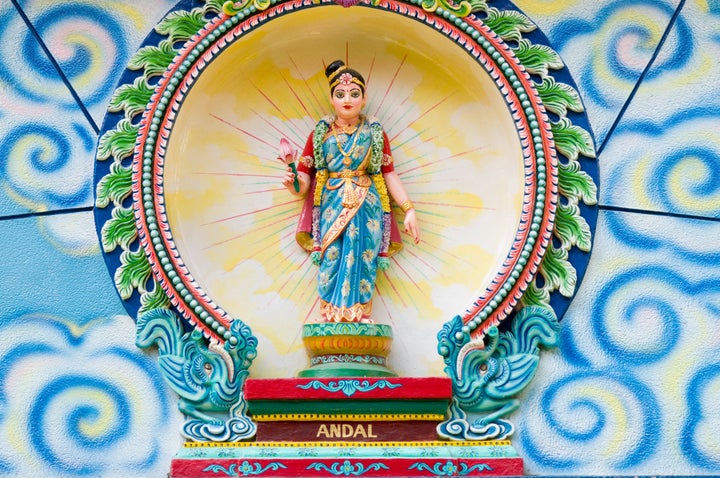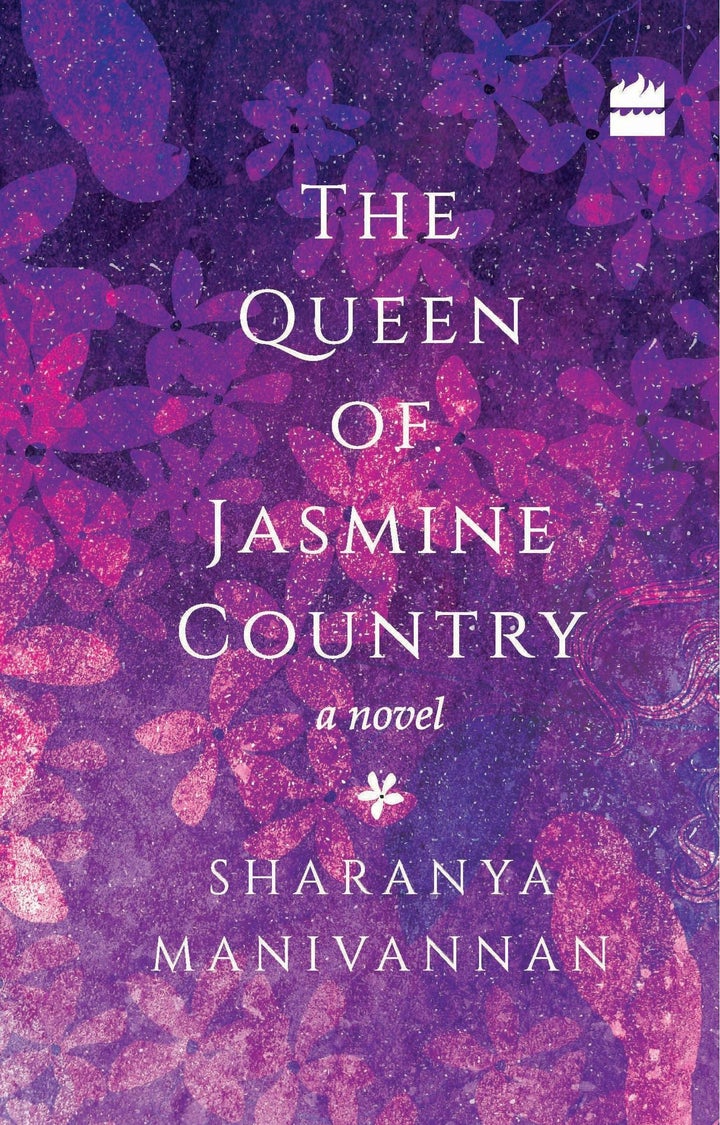
Long ago, in the season of mid-summer monsoon, a baby was found in a Tulsi grove near the house of a garland weaver in Tamil Nadu. The man and his wife would adopt this child that smelled of wild tulsi and basil as their own. Thus begins the story of Kodhai, who became Andal — a Tamil poet renowned for her compositions Tiruppavai and Nachiyar Tirumoli. She is the only female among the ‘Alvars’ or poet saints of southern India. The ‘Alvars’ wrote songs of devotion to Lord Vishnu and believed him to be the ‘supreme being’. In spite of Andal’s rise to prominence in religious and literary circles, her true story remains vague.
The real Andal
Sharanya Manivannan’s reimagined biography of Andal, The Queen of Jasmine Country, strays far from the traditional accounts of reverence. She strips Andal of her divinity, much like Volga’s approach in The Liberation of Sita, and presents Kodhai, the adopted daughter of an alvar named Vishnuchittan. Kodhai grows up in rural Puduvai (believed to be modern day Srivilliputtur, south of Madurai) in the 9th century. Her father Vishnuchittan had a daily ritual of making garlands for Lord Vishnu who resides in the Vatapatrasayi temple in his form as the lord who sleeps on a banyan leaf. Legend has it that the lord would not accept garlands woven by the Vishnuchittan unless they were worn by his daughter first. Encouraged by her friends, the 16-year-old Kodhai embarks on a period of penance to attain the love that she longs for. During this period, she eats simple meals, avoids milk and ghee and meditates on Lord Vishnu. In her spare time, she traces her stylus onto palmyra leaves and writes Tiruppavai in the voice of a cowherd woman, the verses of which are still recited in the month of Margali (mid-December to mid-Januray).
“The narrative is embellished with striking descriptions, be it the garlands interwoven with tulsi leaves and tuberoses, jasmine or crimson tigerclaw flowers or the swirling dance to the chorus of Govinda or the majestic parade of elephants.”
A rich story
Kodhai comes alive in myriad emotions and forms in medieval Tamil Nadu — the naughty child who sneaks out of her house, the helpful girl selling seasonal produce at the market with her mother, the lonely girl who looks forward to her evening chats with cowherd girls and the teenager gripped with a yearning for love. The longing for companionship persuades her to observe the vow of Pavai Nombu to goddess Katyayini and vows to the god of love, Kamadeva. Her jubilant self is laid bare in the verses of Tiruppavai. When her prayers are unanswered, she is overcome with despair which might have influenced Nachiyar Tirumoli, a darker, erotic composition where she invites the lord to be her lover.
The narrative is embellished with striking descriptions, be it the garlands interwoven with tulsi leaves and tuberoses, jasmine or crimson tigerclaw flowers or the swirling dance to the chorus of Govinda or the majestic parade of elephants. There is a strong contrast in the imagery of idle markets and unlit groves of Puduvai to the colours in the streets of Madurai, both co existing with nature’s beauty. Manivannan presents a charming world of rituals through Kodhai’s eyes — pots overflowing with boiling milk to celebrate the harvest festival, Pongal, baths in cold water for the Pavai Nombu vow and hefty bulls, ’flower-decked, painted wearing fabric and trinkets and ready to wrestle’ in the jallikattu sport.

The historical perspective
Andal, born Kodhai, attained divinity through her marriage to Lord Vishnu and is one among the twelve Alvars. Many hymns written by Alvars were believed to be lost until 4,000 verses were compiled into an anthology known as Naalayira Divya Prabandham (naalayira means 4,000) by Nathamuni in the 9th-10th centuries. This established an order where Tamil religious life could be independent of Sanskrit. The liturgical composition, which includes Kodhai’s and Vishnuchittan’s work, paved way for the Bhakti movement that later spread to the northern parts of India.
A feminist poet-saint
The young Kodhai is a willful girl with strong desires just like the women in Manivannan’s earlier short story collection, The High Priestess Never Marries. She is keen on having a pompous ceremony to announce her coming of age even though her grandmother thinks otherwise. But she scorns the idea of being married to a man as “There are no homes with rooms large enough for the wingspan of a woman like me” and wants to attain the lord for herself.
From an early age, Kodhai notices the difference in the social role of the genders. While her grandfather held onto early notions that women shouldn’t be taught to read, her father introduces her to literature. Kodhai is also aware of the caste distinctions that exist in her society that make knowledge accessible to only a select few. She is fascinated with the clan of cowherds who perform the same job, be they men or women, unlike her own caste, and marry for love and not under a horoscope.
“It is a fitting homage to Andal, who in fact had appeared in a dream to Manivannan in 2014 and urged to write her story.”
When Kodhai laments the shackles that confine her, she is hopeful of breaking free — “Because my father will not allow me to travel again, because this town will not let me leave its grasp, because I am born a woman in this century, borrowed into this caste, bound by cruel laws and cultural mores — because all of this restrains me, I will walk a pilgrimage in my mind.” On being addressed by the villagers as ‘Kodhai, the poet’ instead of the poet’s daughter, she revels in her success. True to her devotion, Lord Vishnu appears in Vishnuchittan’s dream and asks for Kodhai’s hand thus immortalising her as Andal.
The Queen of Jasmine Country is a lyrical fable seeped in strong, indigenous, sensual prose. It is a fitting homage to Andal, who in fact had appeared in a dream to Manivannan in 2014 and urged to write her story.